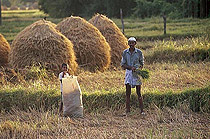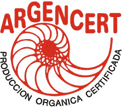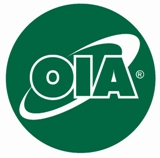
Encontrar vendedores de ecologicos
La guía Greentrade
Haga clic en el número de oferta para obtener los datos de la empresa.
Para obtener las direcciones de correo electrónico, tan sólo ha de suscribirse o nos puede contactar al tel. : +33 1 47 50 02 73
Fax : 33 1 47 50 28 67

Carmel Organics has been involved in the trading of around 242 certified organic products, involving both cultivation and wild harvest.
Cereals
Barley whole
Basmati rice (white/brown)
Basmati rice-brown Basmati rice-white
Brown Rice Brown Sesame/Sesamum
Maize (Corn) Non-basmati paddy seed
Non-basmati rice Paddy Straw/Husk
Pearl Millet/Bajra Ragi (Finger Millet- other than seed)
Ragi/Finger Millet grain
red rice paddy Red rice paddy seed
Rice
Sorghum
Suji
Wheat flour Wheat husk
Wheat Maida Wheat Porridge/Dalia
phone +354 4552200
SAH afurðir ehf.
sahun.is
or incorporating into the soil as an extension to the basic fertilization with solid fertilizers.
ROKOHUMIN in liquid form is a universal fertilizer harmless to the environment, intended for treatment of vestures of all arable crops without exception. Composition of the fertilizer is designed in the way to best possibly adapt to the abilities of individual plants to receive nutrients through the leaf surface. Uniform and rapid absorption of the individual components of fertilizer is subject to compliance with good concentration and timing of individual applications. We use fertilizer primarily in open areas under cultivation, in plastic greenhouses, greenhouses and we apply it by all usually available methods, including drop irrigation.
Efficiency: 5 – 20 % increase of the yield, depends on the specific crop
Aucune transformation.
Produit équitable, certifié ECOCERT.
or incorporating into the soil as an extension to the basic fertilization with solid fertilizers.
ROKOHUMIN in liquid form is a universal fertilizer harmless to the environment, intended for treatment of vestures of all arable crops without exception. Composition of the fertilizer is designed in the way to best possibly adapt to the abilities of individual plants to receive nutrients through the leaf surface. Uniform and rapid absorption of the individual components of fertilizer is subject to compliance with good concentration and timing of individual applications. We use fertilizer primarily in open areas under cultivation, in plastic greenhouses, greenhouses and we apply it by all usually available methods, including drop irrigation.
Efficiency: 5 – 20 % increase of the yield, depends on the specific crop
Role of HUMIC ACIDS in the fertilizer ROKOHUMIN
• it increase the intensity of respiration of plants (in the absence of oxygen makes breathing easier by quinonid structures which at the oxidation in plant cells take in hydrogen)
• it increase the chlorophyll content
• it helps to improve photosynthesis at lower light intensity, e.g. in greenhouses or plastic greenhouses (increasing adsorption of photons)
• it affects income and transport of nutrients (it binds macro and micronutrients to the chelate complexes, from which theplants take them in easier)
• they affect positively on the development of root system, increasing the overall germinative capacity and overall viability
Application by foliar fertilization:
• Represents a simple and targeted application through which the plant obtains nutrients and deficient components fast and specifically.
• In the initial phase of vegetation provides vital growth and increased resistance of the treated plants to diseases andadverse weather conditions, because exactly at that time it isnecessary to strengthen condition or possible fast recovery.
• It works in cases where there is a lack of moisture in the soil which leads to physiological blockage of nutrient intake by root system. Similarly, fertilizer helps in conditions of excessive soil moisture, when the physiological and biochemical activity of the root system is limited due to lack of oxygen in the soil environment. Last but not least, in the situations where there is leaching of nutrients into the lower layers away from the roots,or floating into surface waters.
Through foliar fertilization by fertilizer ROKOHUMIN it is possible to improve overall plant health and with relatively low cost to help achieve excellent outcomes in terms of height and quality of harvest of grown crops. Generally applies that we apply fertilizer during the period of regeneration fertilization together with herbicides, respectively at the nearest entry to vestures.
Application in the form of sealing or direct incorporation into soil:
• serves as an extension to the basic fertilization
• is particularly beneficial in cases when the soil is lower inessential nutrients, or if there is a lack of organic matter in the soil
• to ensure the correct application process it is necessary
to use modern mechanisms allowing application of fertilizer directly into the soil (using slurry tanker or side-dressed cultivator)
Composition:
total nitrogen (N) min. 50 g / liter
phosphor (P2O5) min. 40 g / liter
potassium (K2O) min. 60 g / liter
humic acids min. 80 g / liter
Fertilizer also contains sulfur, iron, boron, zinc, copper, manganese, molybdenum.
pH: 6.5 to 7.0
density of fertilizers (at 20 °C): 1.20 kg / liter
form: a dark liquid with a characteristic odor
Certificate number: 952
Issued by: Central Controlling and Testing Institute in Agriculture (ÚKSÚP) on 9th of August 2010
Application and dosing:
It is applied by spraying on the leaves starting at 40 to 50% land coverage by leaves so that the surface of leaaves is sufficient for efficient nutrient intake from fertilizer. The application is optimal at this time, since there is the best utilization of the components stimulating the growth of the root system and aboveground mass production. In general, it is necessary to focus on a crucial phase of the vegetation
of a particular crop. Recommended dosage ranges from 5 to 10 liters of concentrate per hectare, depending on the specific crop. Fertilizer can be mixed with commonly used pesticides. In the event that the miscibility of pesticides allows it, miscibility can also be combined with highly enriched liquid nitrogen fertilizer - (by tank-mix).
Amaranth plants are also grown in the United States, where surprisingly they can grow under a range of conditions. The National Academy of Sciences considers Amaranth a perfect crop for improving the health and well-being of people in developing countries.[1] Clusters of tiny Amaranth seeds are formed in the plants that are then harvested. They are dried and can be popped to make puffed Amaranth, or ground to make Amaranth flour. Amaranth seeds can be prepared like rice and makes a delicious substitute.
Amaranth is native to South and Central America. It was a staple in the Aztec diet and used in religious rituals. It provided a rich source of protein and nutrients for the people of this region. However, its use as a staple diminished considerably when Spanish colonizers considered it heathen food and banned its use. This did not prevent Amaranth from spreading throughout the world.
Since the 1970s, Amaranth has regained its standing as a potential staple crop and is considered a pseudo-grain because of its similar nutritional profile to grains and cereals, although it contains more protein and is gluten-free.
We also offer a full range of organic and superfruit ingredients manufactured at our facilities all over the world and stocked in our 26,000 square foot facility in the greater Los Angeles area.
Contact us for free samples and more product information today.
It builds marrow, muscle, increases red blood count and is thought to be helpful for healthy blood sugar levels. Compounds called withanolides are believed to account for the many medicinal applications of Ashwagandha.
Ashwagandha is a promising alternative treatment for cerebral disorders in the elderly as well as degenerative diseases such as Alzheimer's and Parkinson's.
Ashwagandha is nourishing to the tissues and is used for fertility problems in men and women. It helps to build semen as well as bone marrow, muscle and increases red blood count.
Ashwagandha is thought to be helpful for tumors, diabetes and arthritis. It may also help build up overall strength during and after chemotherapy treatments.
Hailing from the majestic Andes mountain region of Peru, Purple Corn was regarded as a sacred food in the pre-Columbian cultures of South America. And for good reason! Purple Corn is now considered a "superfood" in modern society due to its high anthocyanin content and free radical scavenging capabilities.
The Mesquite tree may look intimidating with its twisted limbs and long thorns, but don't be scared off by this helpful tree! Mesquite has a delicious, caramel-like taste and is often used as a gluten-free alternative to wheat flour, or even as a sweetener!
A great source of dietary fiber, Mesquite also contains vital nutrients such as calcium and magnesium. Mesquite may help maintain blood sugar and blood pressure levels already within the normal range.
Mesquite powder is gluten-free, high in bioavailable protein, with a low glycemic index. This highly nutritious substance also contains calcium, magnesium, potassium, iron and zinc, and is rich in lysine, an amino acid. It is also a good source of dietary fiber.
















